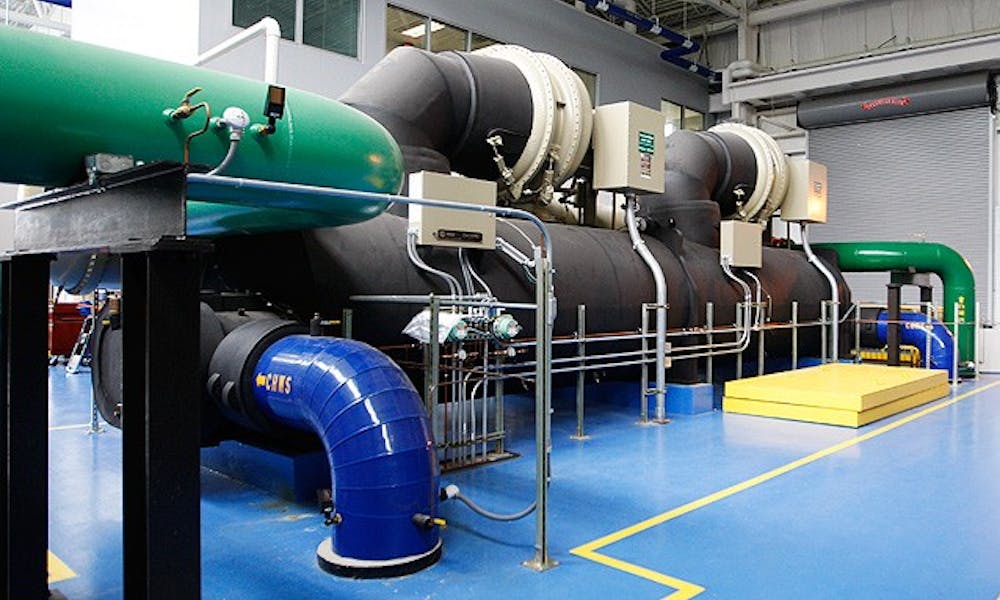In response to increasing demand on its centralized cooling system, the University is expanding one of its chilled water facilities.
The University’s second chilled water plant, located off LaSalle Street, helps to provide the majority of air conditioning to the University and the Duke University Medical Center. Its $22 million expansion—approved by the Board of Trustees in May—will double the size of the plant to accommodate for the construction of the Duke Medicine Pavilion and the Cancer Center as well as future additions to the University, said John Noonan, associate vice president for facilities management.
“We are essentially out of capacity right now for chilled water,” Noonan said. “We have a lot of buildings hooked up to the system. This plant expansion, depending on how fast Duke grows in the future, could [meet cooling needs for] ten or twenty years.”
To increase the plant’s efficiency and capacity for cooling, the addition will install two 3800-ton centrifugal chillers in addition to piping, electrical infrastructure and necessary floor space for four more 3800-ton chillers, Smith added.
Construction will begin as soon as the plans are approved by the city of Durham, which is expected to be within the month, Noonan said. The project is estimated to take between 15 and 18 months to complete.
The plant is a key component of Duke’s centralized cooling system, which is a more efficient alternative to individual systems for buildings on campus. Duke constructed its first chilled water plant in 2000 at the corner of Towerview Drive and Science Drive to provide air conditioning to the campus more efficiently.
The plant uses chilled water to transfer heat from the inside of buildings to the outside. A centralized system is cheaper and greener because it can be closely controlled to optimize cooling while using as little water and electricity as possible. This cannot be done with several hundred smaller units, said Darin Smith, manager for chilled water plant operations.
The plant maximizes efficiency using software that Tom Young, a controls engineer at the plant, described as “self learning.” The software optimizes the machinery through constant recalculations based on the machinery’s past performance, he said.
When the chillers are operating at their most efficient levels, the university saves costs on water and electricity, said Smith.
Get The Chronicle straight to your inbox
Signup for our weekly newsletter. Cancel at any time.

